
This site uses cookies, by continuing to use this site you accept the terms of our privacy policy
Feed 2.0 Loading...
Dounreay Prototype Fast Reactor Coming Apart
17th January 2007
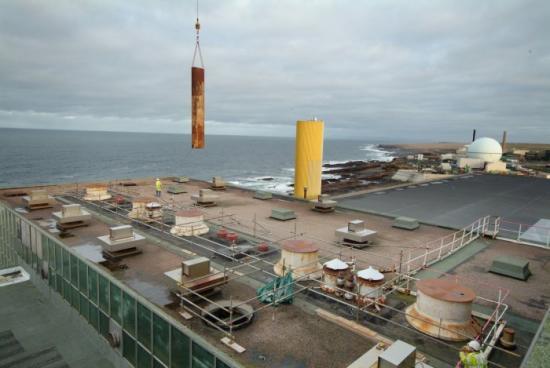
Work to pull apart Dounreay's Prototype Fast Reactor (PFR) is rapidly advancing with more and more large items of redundant equipment being ripped out of the former reactor complex as the plant is dismantled.
Dounreay is at the leading edge of world-wide clean-up of former nuclear facilities, and as demolition progresses removal of massive and extremely heavy steel structures presents a challenging task to the site.
This phase of pulling apart the plant has seen the removal of the largest amount of steelwork from the facility since decommissioning began and has resulted in the first visible external impact of the reactor demolition by leaving a noticeable gap on the Dounreay skyline.
This �1m project is major progress for PFR. The project involves the strip-out of the steam generating building and the three secondary sodium circuits, with the associated redundant plant and equipment being removed for disposal. One of the major items size reduced and removed was the twenty-seven metre high main steam stack, weighing thirteen tonnes, which was cut into five sections using the 'PetroGen' hot cutting technique. These sections were carefully and slowly raised through the roof of the former turbine hall, using the tallest crane since the construction of the
facility forty years ago, towering some 126 metres over the steam generating building. The two remaining forty tonne steam boilers were also size reduced and removed.
A pioneering cold diamond wire cutting technique is also being used to size reduce the eight thirty-two tonne secondary circuit heat exchanger tube bundles. The diamond wire resembles a thick diamond encrusted cheese slice, which drives its way through lumps of redundant steel with minimal waste generation as no coolant is required to cool the wire.
John Lehew, head of the site decommissioning programme, said: "This is another historic milestone in the restoration of the Dounreay site on behalf of the Nuclear Decommissioning Authority. Removal of redundant equipment from our plants is crucial to enable the decommissioning programme to proceed. UKAEA's project manager, Rashid Abdulla, and his team, have worked extremely hard to ensure the safe and successful stripping out of this area in order to proceed with the redundant plant dismantling."
Following its shutdown in 1994, PFR is undergoing a 30-year decommissioning programme. The facility presents hazards associated with forty year old construction materials, heavy plant and specialised mechanical equipment, combined with radiological issues and the major hazards associated with removal of the sodium liquid metal coolant.
Dr Jim McCafferty, PFR decommissioning manager, has paid credit to Nukem Ltd, Baker Dougan Ltd, Caithness Scaffolding (Contractors) Ltd, Sureclean and Hugh Simpson (Contractors) Ltd, who were all involved with this work: "This is a great team effort, UKAEA and its contractors have worked tirelessly to ensure the safe stripping out of this area in order to proceed with dismantling the PFR facility."
Note
PFR operated for twenty years from 1974 until 1994. 1500 tonnes of liquid sodium metal was used as the coolant to transfer the heat from the reactor core through to the three secondary circuits to a steam-generating plant for electricity production. All the nuclear fuel was removed from the reactor following its closure and the next phase of decommissioning is to complete the disposal of the remaining sodium using the revolutionary Water Vapour Nitrogen process (WVN) process following the destruction of the majority of the sodium via the sodium disposal plant. PFR had the dual role of providing power to the national grid and offering unique research and development facilities. PFR provided information for the future design and operation of large commercial fast reactor stations and had an electrical output of 250 MW, which was enough electricity to supply a city the size of Aberdeen.
See more Dounreay photos
Related Businesses
Related Articles
10/1/2025
Fusion-grade Steel Produced At Scale In UK-first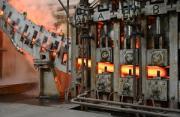
Researchers achieve 10x production cost savings for reduced activation steel. A United Kingdom Atomic Energy Authority (UKAEA) working group has successfully demonstrated the industrial scale production of fusion-grade steel.
22/12/2024
UKAEA To Lead The Creation Of A Robotics And AI Cluster
UKAEA will lead the creation of a new £4.9m nuclear robotics and artificial intelligence cluster across Cumbria and Oxfordshire. The robotics and AI cluster was announced by UK Research and Innovation (UKRI) as one of seven new projects to kickstart economic growth and address regional needs: www.ukri.org The robotics and AI cluster will link Cumbria and Oxfordshire to accelerate the decommissioning of the UK's legacy nuclear fission facilities and keep people out of hazardous environments.
5/12/2024
Diamonds Are Forever? World-first Carbon-14 Diamond Battery Made In Uk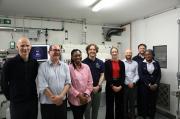
The world's first carbon-14 diamond has been produced with the potential to provide power for thousands of years. Scientists and engineers from the UK Atomic Energy Authority (UKAEA) and the University of Bristol have successfully created the world's first carbon-14 diamond battery.
4/11/2024
UKAEA Monthly Newsletter Latest Edition
Find out what has been happening at UKAEA in our monthly newsletter. Read about our recent activities and upcoming events.
1/10/2024
UKAEA Newsletter - Edition 11 Published Today
Find out what has been happening at UKAEA in our monthly newsletter. Read about our recent activities and upcoming events.
23/5/2024
Corwm Visits Dounreay Nuclear Site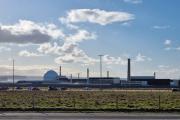
Members were given an overview of the scale of the problem and challenges faced in the decommissioning of the site. In the last week of March 2024, several members of CoRWM led by the Chair, Sir Nigel Thrift, made the long journey up to the North of Scotland to visit the Dounreay nuclear site, now managed by Nuclear Restoration Services.
5/3/2021
Design Contract Awarded For Dounreay Shaft And Silo Work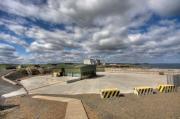
Dounreay has awarded an important waste clean-up contract to Jacobs as the site plans for the future of its deepest historic radioactive waste store. Jacobs and its supporting partners have been awarded a 6-year contract to provide a design management team to produce a fully integrated design for the shaft and silo project.
6/11/2013
Radiation dose to public from Dounreay reduces
Dounreay�s radioactive impact on the environment continues to fall, according to a report. The annual survey report �Radioactivity in Food and the Environment� (RIFE 2012) has recently been published and it can be read here - http://www.sepa.org.uk/radioactive_substances/publications/rife_reports.aspx The report uses data obtained from samples of air, fresh water, grass, soil, and locally sourced meat, fish, milk and vegetables during 2012.
6/4/2012
57,000 Tonnes Of Hazardous Materials Finally Dealt With At Dounreay
Dounreay today completed the destruction of one of the most hazardous legacies of Britain's earliest atomic research. A purpose-built chemical plant processed the last of 57,000 litres of liquid metal lifted from the primary cooling circuit of the experimental fast breeder reactor.24/3/2011



